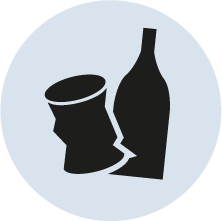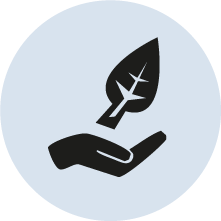What can I do?
Reduce plastics

Plastics are widely used in consumer products – but they don’t dissolve, ever, and this causes a lot of harm in the environment.
Seabirds are found with their stomachs full of plastic items. Microplastics are consumed by animals like plankton, passing the problem back up the food chain – to us.
Try to opt for other materials than plastic – ditch that plastic fork! Recycle well. Take part in beach clean-ups!
More reading: 10 ways to reduce plastic pollution
Don’t flush drugs

Medicines have been used and released into the environment for decades and this problem has has only recently been recognized. Pharmaceuticals may end up via wastewaters in the marine environment and severe many organisms. Don’t ever throw them to the toilet!
Medicines are harmful because they are synthetic compounds which do not occur naturally in nature. They are also hazardous because they are designed to affect their subject even at low concentrations.
More reading: How to reduce pharmaceutical emissions posing a threat to wildlife in the Baltic Sea?
Choose eco-friendly

Many personal care products and cosmetics, as well as cleaning and gardening supply, contain chemicals which are harmful for the environment. Please choose non-toxic, eco-friendly products.
Take also care in correct disposing of batteries and other hazardous wastes.
Some garments have special coatings for rain or fire proofing, or fire proofing – check the care instructions carefully when cleaning such products.
More reading: Preventing pollution and reducing hazardous substances in the Baltic Sea
Other resources
- Marine litter harms all Baltic Sea shores (MarineFinland.fi portal)
- Large amounts of medicinal drugs end up in the Baltic Sea
- EU Ecolabel Groups and Criteria (DG Environment)
What is HELCOM doing about it?
Industrial activities, busy traffic, maritime transports, intensive farming and animal husbandry all take place in the Baltic Sea catchment area, which is also home to some 85 million people. Several different hazardous substances leak out from all these sources. Some airbourne substances can travel thousands of kilometers from their sources affecting the Baltic Sea from a great distance.
Hazardous substances can accumulate in the marine food web up to levels which are toxic to marine organisms, particularly predators, and they may also represent a health risk for people.
Several HELCOM assessments on hazardous substances have been carried out since the agreement of the Baltic Sea Action Plan. HELCOM also tackles with dumped munitions, radioactivity, and pharmaceuticals.
HELCOM also regularly produces a Pollution Load Compilations (PLC) which assesses air and waterborne inputs of hazardous substances, and nutrients, to the Baltic Sea.
Marine litter
Marine litter is not only an aesthetic problem but incurs socioeconomic costs, threatens human health and safety and has impacts on marine organisms.
HELCOM adopted its first regional action plan on marine litter in 2015, and it was updated in 2021.
Further reading:
Baltic Sea knowledge: Hazardous substances
HELCOM Action Areas:
